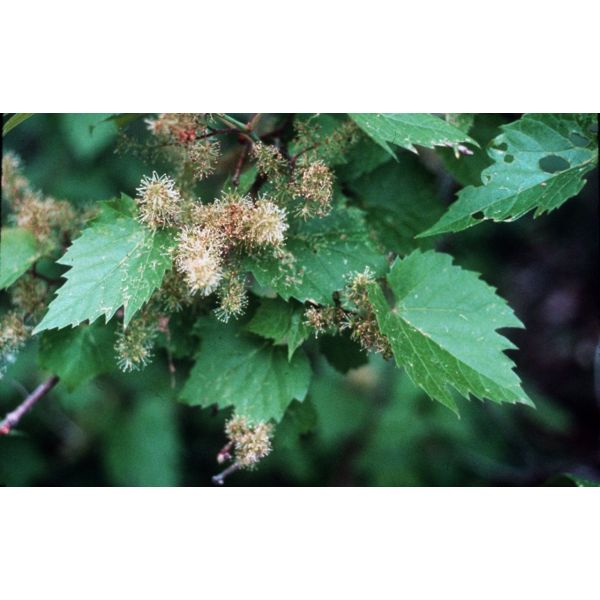Vitis Riparia Seeds (Frost Grape Seeds, Riverbank Grape)
Vitis Riparia Seeds (Frost Grape Seeds, Riverbank Grape)
This plant is highly valued by wildlife and perfect for naturalizing woodland areas or along fences.

Delivery
All orders shipped with UPS Express.
Always free shipping for orders over US $250.
All orders are shipped with a UPS tracking number.
Returns
Items returned within 14 days of their original shipment date in same as new condition will be eligible for a full refund or store credit.
Refunds will be charged back to the original form of payment used for purchase.
Customer is responsible for shipping charges when making returns and shipping/handling fees of original purchase is non-refundable.
All sale items are final purchases.
Help
Give us a shout if you have any other questions and/or concerns.
Email: contact@domain.com
Phone: +1 (23) 456 789
Availability: In stock
SKU
Vitis Riparia
Vitis riparia, also commonly known as River Bank Grape or Frost Grape, is a Native American climbing or trailing vine, widely distributed from Quebec to Texas, and Montana to New
England. It is long-lived and capable of reaching into the upper canopy of the tallest trees. This plant is highly valued by wildlife and perfect for naturalizing woodland areas or along fences. This vine is a strong climber reaching 12m (2m of annual growth).
This plant is recommended for covering tall fences and various supports as well as concealing unsightly buildings. It can suppress the growth of other plants. The growth form is that of a woody vine. There are well-developed tendrils that wrap around nearby plants or other objects to help the vine climb.
Mature vines have loose, fissured bark, and may attain several inches in diameter. Leaves are alternate, and lobed (there can be dramatic differences in the lobbing pattern from one leaf to the next). The lobes are generally sharp-pointed and there are also large sharp teeth along the margin. The leaves often have opposite tendrils or inflorescences; they are about 5?25 cm (2?10 in) long and 5?20 cm (2?8 in) broad, sometimes with sparse hairs on the underside of veins, and are glossy green on both surfaces.
The vine has large panicles of delightfully Mignonette scented flowers ? a most unusual feature ? in early summer. The inflorescence is 4?15 cm (1.5?6 in) long and is loose, and the flowers are small, fragrant, dioecious, and white or greenish in color. V. riparia blooms in May or June and produces a small 6?15 mm blue-black berry (grape) with a bloom, seeded, juicy, edible, vinous-herbaceous in flavor (not foxy), but usually sour.
Hardiness zones: 2-9 (-43øC/-45øF, -5øC/25øF) in winter. The vine is extremely cold hardy and easily survives temperatures as low as 40øF below zero. The riparia vine prefers a deep rich moist well-drained moderately fertile loam. This vine does best in calcium rich fertile loamy evenly moist soils for best production and flavorful fruit. It will grow best in a calcareous soil. It will succeed in sun or partial shade though a warm sunny position is required for the fruit to ripen. This is an undemanding, drought tolerant and fully hardy species.
| Common name | Riverbank Grape |
|---|---|
| Species | Vitis riparia |
| Germination | Soak the Vitis riparia seeds for 24 hours. Then cold stratify the in moist peat for 6 weeks. After cold stratification period is over germinate at 20øC, while keeping the peat moist but not wet. Sometimes seeds may take another 12 months to germinate so don't give up thinking you have fewer than satisfactory success rate the first spring. This is nature's way. |
| Scarification / Stratification | This will break their dormancy. It creates a cold and moist environment for the seeds. Mixed in seeds with slightly moistened vermiculite or peat, only damp in a ziplock bag. Close zip bag shut and store it in the salad crisper compartment of your refrigerator. If any seeds begin to sprout during the cold stratification, simply remove the seed and plant. |
| Price View | Price Range |

